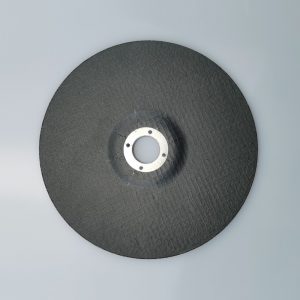How many types of cutting wheels are there?
How many types of cutting wheels are there?
Cutting wheels are essential tools in a wide range of industries, from metalworking and construction to automotive repair and home improvement projects. These disc-shaped abrasives come in various forms, each designed to cater to specific cutting needs and materials.

The Diversity of Cutting Wheels:
Cutting wheels vary significantly in composition, size, shape, and the type of abrasive material used. They can be broadly categorized based on their structure, the material they are designed to cut, and the speed at which they operate. Here are some of the most common types of cutting wheels:
1. Flap Discs:
Flap discs are among the most versatile cutting wheels. They feature a continuous loop design with flaps of abrasive material that can be replaced when worn out. These discs are suitable for grinding and finishing tasks, as well as cutting through metal, rust, and welds.
2. Fiber Discs:
Fiber discs are constructed with an open-fiber web and a layer of abrasive grains. They are known for their ability to cool down quickly and avoid clogging, making them ideal for cutting and grinding on thinner materials like sheet metal or plastic.
3. Diamond Cutting Wheels:
Diamond cutting wheels use industrial-grade diamond fragments embedded in a bonding material. They are incredibly hard-wearing and efficient at cutting through very hard materials such as concrete, stone, and tile.
4. Abrasive Discs:
Abrasive discs are made from a single piece of abrasive material, usually aluminum oxide or silicon carbide. They offer high performance for heavy-duty grinding tasks, but they cannot be re-sharpened and are discarded once dull.
5. Wire Wheels:
Wire wheels consist of numerous fine wires bound together to form a wheel. They are commonly used for deburring, cleaning, and surface preparation on metal parts.
6. Flap Discs with Hooked Ends:
These specialized flap discs have hooked ends designed to remove paint, rust, and other coatings without damaging the underlying surface.
7. Straight Fiber Discs:
Straight fiber discs feature parallel fibers that provide a smooth finish and are less likely to leave scratches on the workpiece.
8. Hollow Grinding Wheels:
Hollow grinding wheels are designed with a hollow center, allowing them to fit over pipes and other cylindrical objects for grinding and polishing.
9. Tuck Point Blade:
Specifically for masonry work, tuck point blades are narrow and allow for precise cutting of mortar joints without damaging adjacent bricks or stones.
10. Diamond Cup Wheels:
Diamond cup wheels are circular segments used for core drilling and grinding on concrete, stone, and other building materials.
Applications of Cutting Wheels:
The variety of cutting wheels ensures that there is a suitable option for nearly every cutting task. For instance:
– Flap discs are often used in automotive bodywork, shipbuilding, and general metal fabrication.
– Fiber discs are preferred for light-duty tasks such as removing paint or preparing surfaces for painting.
– Diamond cutting wheels are the go-to for construction and renovation work involving concrete or stone.
– Abrasive discs are used in heavy-duty applications like cutting off thick metal plates.
– Wire wheels are frequently employed in metal preparation for welding or painting.
– Flap discs with hooked ends are useful in automotive restoration for removing old paint without harming the original finish.
– Straight fiber discs are ideal for achieving a polished look on stainless steel or other metals.
– Hollow grinding wheels are used in pipe fitting and other industrial applications where precision is necessary.
– Tuck point blades are indispensable tools for masons working on historic buildings or those requiring detailed restoration work.
– Diamond cup wheels are used for fast and efficient grinding on construction sites and in stone workshops.
The diversity of cutting wheels reflects the complexity and range of tasks encountered across various industries. From the delicate work of automotive restoration to the heavy-duty demands of construction, these tools are engineered to meet specific requirements. Understanding the different types of cutting wheels and their applications is crucial for selecting the right tool for the job, ensuring efficiency, safety, and optimal results.
News
Contact Us
Contact: Kamel Abrasives
Phone: 86-15639772803 - Eva Lee / 86-18530871671 - Gareth Bayley / 86-13663827325 - Ryan Qiao
Tel: 86-371-88828885
E-mail: sales@kamel.com.cn
Add: High Technology Area, Zhengzhou, Henan, China
